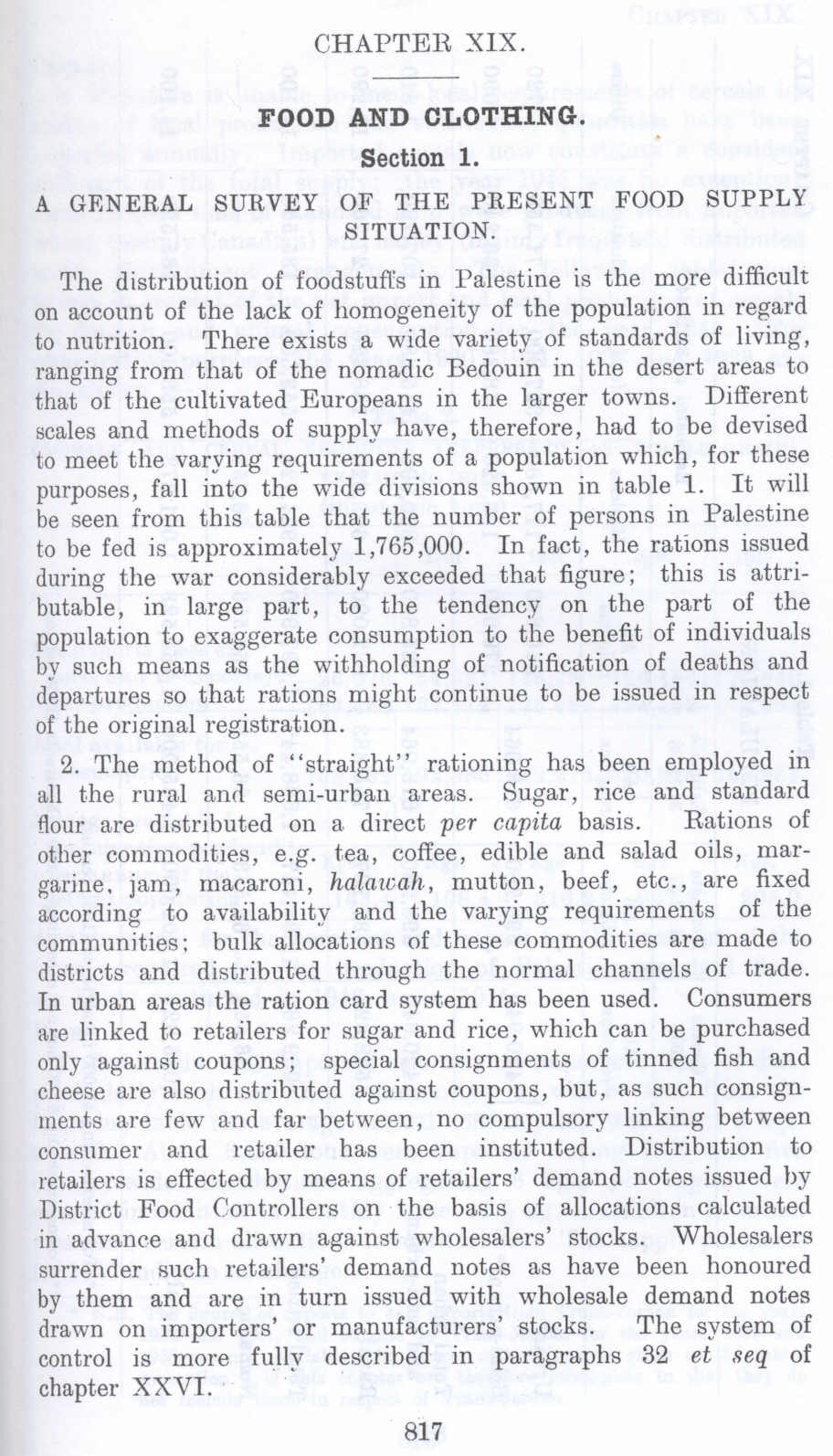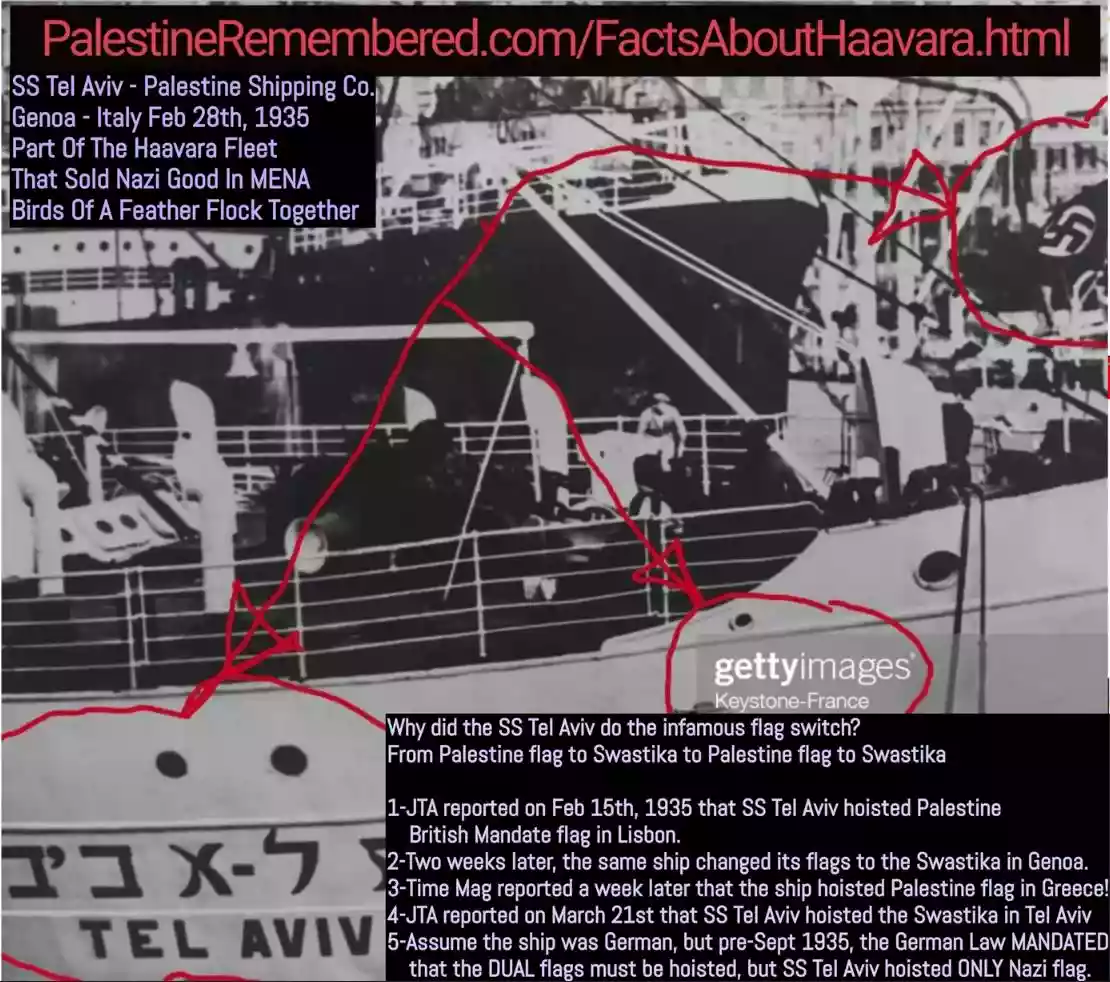| Prev | Next |  |
| Prev | Next |
| PalestineRemembered | About Us | Oral History | العربية | |
| Pictures | Zionist FAQs | Haavara | Maps | |
| Search |
| Camps |
| Districts |
| Acre |
| Baysan |
| Beersheba |
| Bethlehem |
| Gaza |
| Haifa |
| Hebron |
| Jaffa |
| Jericho |
| Jerusalem |
| Jinin |
| Nablus |
| Nazareth |
| Ramallah |
| al-Ramla |
| Safad |
| Tiberias |
| Tulkarm |
| Donate |
| Contact |
| Profile |
| Videos |
Food And Clothing in Palestine before 1948 (Nakba), Section 1: General Survey of The Present Food Situation in Palestine before 1948 (Nakba), British Mandate: A Survey of Palestine: Volume II - Page 817. Chapter XIX |
Disclaimer
The above documents, article, interviews, movies, podcasts, or stories reflects solely the research and opinions of its authors. PalestineRemembered.com makes its best effort to validate its contents.


Post Your Comment
*It should be NOTED that your email address won't be shared, and all communications between members will be routed via the website's mail server.
FOOD AND CLOTHING.
Section 1.
A GENERAL SURVEY OF THE PRESENT FOOD SUPPLY SITUATION.
The distribution of foodstuffs in Palestine is the more difficult on account of the lack of homogeneity of the population in regard to nutrition. There exists a wide variety of standards of living, ranging from that of the nomadic Bedouin in the desert areas to that of the cultivated Europeans in the larger towns. Different scales and methods of supply have, therefore, had to be devised lo meet the varying requirements of a population which, for these purposes, fall into the wide divisions shown in table 1. It will be seen from this table that the number of persons in Palestine to be fed is approximately 1,765,000. In fact, the rations issued during the war considerably exceeded that figure; this is attributable, in large part, to the tendency on the part of the population to exaggerate consumption to the benefit of individuals by such means as the withholding of notification of deaths and departures so that rations might continue to be issued in respect of the original registration.
2. The method of "straight" rationing has been employed in all the rural and semi-urban areas. Sugar, rice and standard flour are distributed on a direct per capita basis. Rations of other commodities, e.g. tea, coffee, edible and salad oils, margarine. jam, macaroni, halawah, mutton, beef, etc., are fixed according to availability and the varying requirements of the communities: bulk allocations of these commodities are made to districts and distributed through the normal channels of trade. In urban areas the ration card system has been used. Consumers are linked to retailers for sugar and rice, which can be purchased only against coupons; special consignments of tinned fish and cheese are also distributed against coupons, but, as such consignments are few and far between, no compulsory linking between consumer and retailer has been instituted. Distribution to retailers is effected by means of retailers' demand notes issued by District Food Controllers on the basis of allocations calculated in advance and drawn against wholesalers' stocks. Wholesalers surrender such retailers' demand notes as have been honoured by them and are in turn issued with wholesale demand notes drawn on importers' or manufacturers' stocks. The system of control is more fully described in paragraphs 32 et seq of chapter XXVl.
817